SaaS marketers’ priority is generally to capture as many leads as possible with the aim of converting these leads into users and, ultimately, paying customers further down the line.
The thing is, not all leads are equally valuable to a SaaS company. Plenty of people may engage with your content, sign up to your email lists and even try out a free version of your software without ever buying into your product when the crucial moment comes.
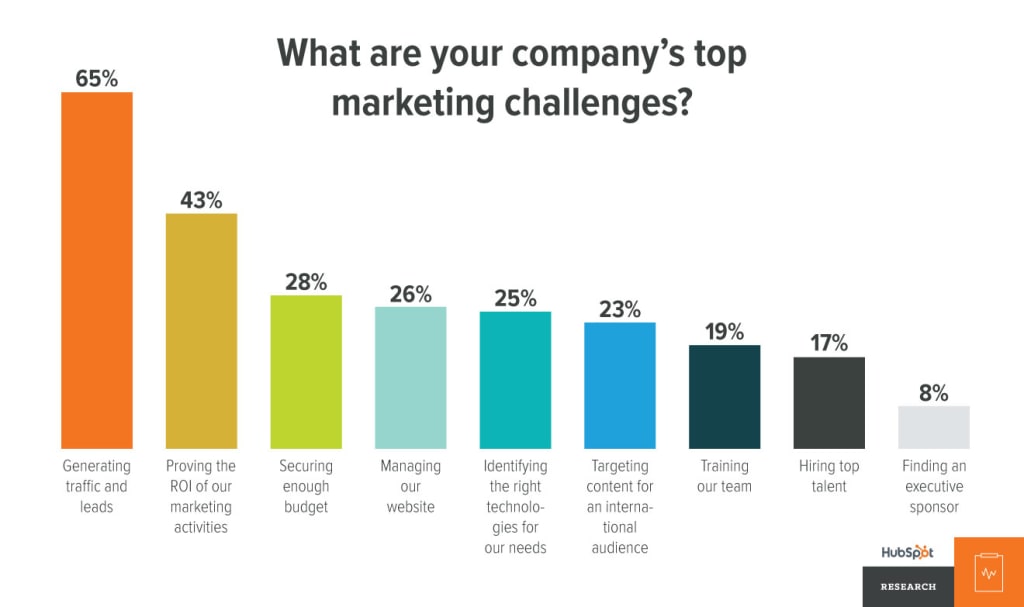
Simply generating leads isn’t enough to maximise user numbers and revenue. SaaS marketers need to capture the right kind of leads from prospects who are most likely to buy into the product and spend enough money for you to hit your revenue targets
This is where marketing qualified leads (MQLs) come in.
These are prospects that demonstrate a genuine interest in buying your product and match your target buyer personas (company size, revenue, budget, technology use, etc.).
In this article, we look at how you can qualify leads to improve the quality of prospects on your marketing list and increase the number of MQLs you generate from every channel.
What are we looking at in this article?
This article is geared towards SaaS companies and marketers although the same principles apply to businesses of all types. We’re focusing on the typical objectives of a software company (e.g.: capturing leads and converting them into paying users) but this is a good all-round guide for any company that wants to generate more MQLs.
Here are the sections we’ll be covering today:
- What is an MQL?
- Inbound marketing: Capturing MQLs and leads that can be nurtured into MQLs further down the line.
- Account-based marketing: Targeting specific companies and decision-makers to capture MQLs from your ideal buyer personas.
- Lead qualification & scoring: Qualifying and scoring leads to prioritise the most valuable prospects.
- Increase SaaS MQLs: Key strategies for increasing SaaS MQLs.
First, we’ll start by explaining what an MQL is and how you can define them for your business. Then, we’ll explain how you can capture more MQLs through inbound marketing and account-based marketing before we look at how MQLs fit into your wider marketing and sales strategy.
Once we’re done, you’ll understand why MQLs are so important for SaaS companies (or any company for that matter) and how to capture more of them with specific strategies for SaaS companies.
What is an MQL?
A marketing qualified lead (MQL) is a prospect that matches your target buyer personas and demonstrates real potential to complete your conversion goals.
So, if your ideal customer is CEOs at technology startups, programming students probably don’t qualify as MQLs for you. Likewise, if you need customers to spend an average of $30,000 per year to hit your revenue targets, small businesses with a $<5k annual software budget may not be worth pursuing, regardless of how much they like the free version of your platform.
In other words, an MQL not only shows a proven interest in buying your SaaS product, but also the ability to help you achieve your marketing/business goals – user numbers, revenue, annual spend, customer lifetime value, etc.
By defining, targeting and capturing more MQLs, you can concentrate your marketing efforts on the most valuable leads without wasting resources on prospects that are never going to buy or spend enough on your software product.
How do you identify MQLs?
Before you can capture MQLs, you need to define what these mean for your business and this combines two key components of your marketing and sales strategies:
- Buyer personas: The characteristics your target customers have to demonstrate their value to your business.
- Marketing goals: The marketing goals you need these buyer personas to help you achieve.
For example, a company like Slack will have a broad range of buyer personas, ranging from CEOs at enterprise companies (the big spenders) to bootstrapped creative teams and freelancers (free users who boost the company’s active user numbers, even if they’re not paying).
There are two very different marketing objectives there: maximise revenue and maximise user numbers (most of whom will presumably be free users).
There’s value in both types of prospects for Slack and, arguably, the free users have been more important in the company’s incredible growth story. However, now that the company has reached a certain size (and, even more so after being bought by Salesforce), there comes a point where the company has to prioritise annual revenue.
When it comes to your own SaaS company and defining MQLs, you have to have a solid understanding of your target buyer personas and which marketing/business goals they’re going to help you achieve.
Defining your MQL criteria
Defining your MQL criteria should be fairly straightforward if you’ve got detailed, accurate buyer personas. Let’s say your most important target customer is small businesses capable of spending $10,000+ per year on your software product.
You need to identify the business characteristics that suggest they’re able to meet your minimum annual revenue per user (RPU).
Your aim here is to rule out businesses that can’t spend this minimum without narrowing your reach to the point where you miss out on leads that could.
For example, your research may find that companies with 5+ employees are most likely to reach the $10k threshold. In this case, you could place businesses with fewer than five employees on a low-priority list and focus your efforts on the MQLs that meet your criteria.
Taking this further, you may find companies in certain industries tend to spend more than others, meaning small finance businesses with 5+ employees top your list of prospects.
Next, you might decide to target companies already paying for similarly priced software with the aim of bringing them over to your own product.
The more specific your buyer personas are, the more complex your MQL criteria becomes. The trick is attributing the characteristics of your buyer personas to the likelihood of them hitting your marketing objectives.
Qualifying your leads
With your MQLs identified and criteria defined, you need to implement a lead qualification process for capturing the necessary data from leads to separate MQLs from those that don’t qualify.
You also need the right tools to segment MQLs from non-qualifying leads and even different types of MQLs.
We’ll explore this in more detail later, in the lead qualification & scoring section, where we explore the methods of qualifying MQLs and how you can use them to prioritise the most valuable leads to your business.
Inbound marketing: Casting a wide net to capture leads & MQLs
For SaaS companies, inbound marketing is like casting a wide net to build as much awareness for your products as possible and generate large volumes of leads from potential users and customers.
Some software companies (particularly those that prioritise user numbers) want to cast the widest net they can and this is often the case for freemium products where maximising free user numbers is a valid objective.
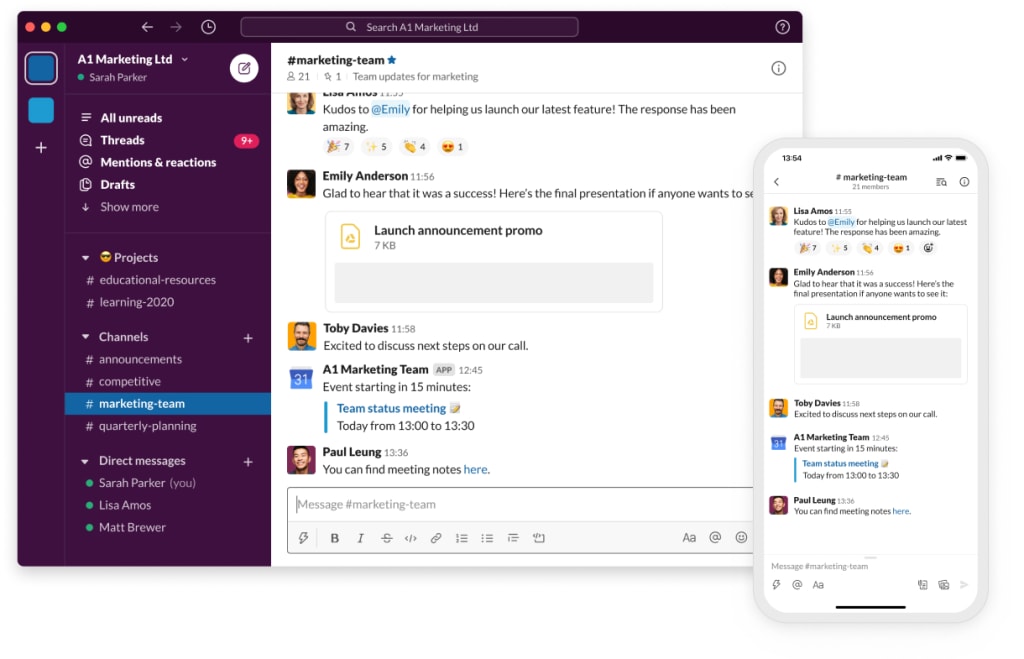
Obviously, companies like Slack, Trello and Spotify want to convert as many free users into paying customers as they can but high user numbers impress stakeholders and potential investors.
For many SaaS companies, there’s value in collecting as much user data as they can, too, whether it comes from free or paid users.
The tricky thing about inbound marketing is that it’s highly effective for generating traffic and capturing leads. However, generating the right traffic and capturing leads that are likely to use your software is another challenge entirely.
By adopting an MQL process in your inbound marketing strategy, you can control how wide your net is and prioritise all of your resources on leads that can add true value to your business.
Capturing the data you need from inbound traffic
To qualify inbound traffic, you need to capture data from these users to distinguish between prospects with the intent/ability to meet your MQL criteria from those without.
The easiest way for SaaS companies to do this is to create a free account system, encouraging new users to sign up and create an account without putting any money on the line.
The trick is offering enough value via free accounts to capture enough sign-ups.
You might decide to create a free version of your software or a free plan that allows new users to get started with your product and see what it has to offer. While they’re using this free version, you get the opportunity to collect valuable user data, which you can use to qualify leads.
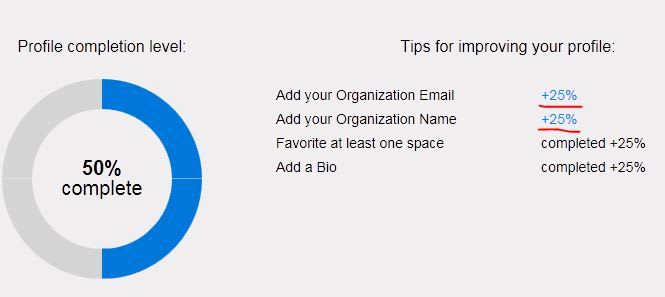
You can capture this data by encouraging users to complete their profile by adding the information you need to qualify leads and you can ramp up the incentive to complete these profiles by gamifying the process with rewards and progress counters.
Alternatively, you could use a platform like UserVoice to deliver surveys to users within your app.
Of course, you can also take the more traditional route of prompting users to provide the data you need through email campaigns but you don’t need a free product or plan for this.
The downside to offering free accounts, versions and products is that you might generate a higher volume of leads than you would like that don’t meet your MQL criteria.
Now, if you’re looking to maximise growth and free users are going to help boost your numbers, that’s fine – as long as there’s value in that for your business.
Keep in mind, though, that most CRM and marketing platforms charge fees based on the number of leads/contacts you have on the system and the managing a pool of leads that never upsell can be demanding (luckily, you can reduce most of the workload through automation).
Either way, lead volume isn’t always the priority and you might prefer to have a smaller list of higher quality contacts, most of whom stand a strong chance of buying into your product.
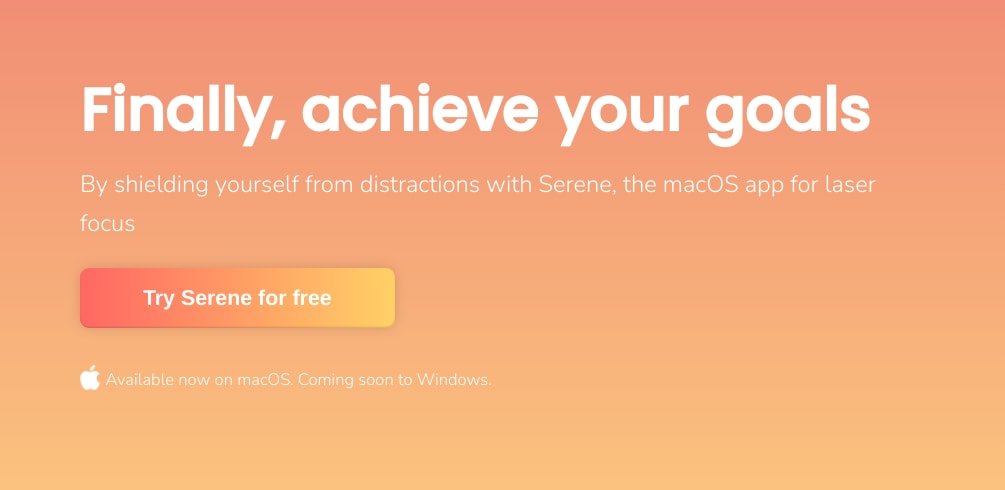
So, instead of providing free open accounts that are open to everyone, another alternative is to offer a free trial to your paid product, knowing fewer people will sign up with the added bonus that they’ve already demonstrated a strong interest in your software.
You still get the chance to capture all the data you need through the sign-up process and you can encourage users to complete their account profile in the same way we explained earlier – the only limitation is you have to capture this data before their trial runs out.
Account-based marketing: Going straight for your target customers
Unlike inbound marketing, which casts a wide net to capture a large volume of unidentified leads, account-based marketing (ABM) targets specific companies and individuals that you want to call customers.
According to TOPO’s Account Based Benchmark Report, 86% of marketers say their account-based strategies win more clients than traditional methods while 80% say ABM improves customer lifetime value and 76% report higher ROIs.
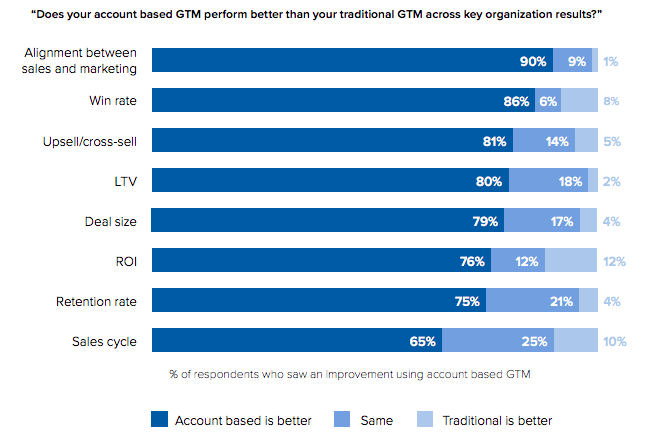
So, while inbound marketing is effective for maximising lead volume and user numbers (especially for freemium models and B2C products), account-based marketing allows you to specify high-value prospects and target the decision-makers who ultimately choose which software products they use.
Don’t take my word for it, though. Here’s how HubSpot describes account-based marketing and some of its key benefits:
“Account-based marketing (ABM) is a focused growth strategy in which marketing and sales collaborate to create personalized buying experiences for a mutually-identified set of high-value accounts.
“[ABM] allows you to weed out less-valuable companies early on and ensure marketing and sales are in complete alignment — in return, your team can leap into the critical processes of engaging and delighting those accounts much faster…
“…By doing this — along with personalizing the buyer’s journey and tailoring all communications, content, and campaigns to those specific accounts — you’ll see greater ROI and a boost in customer loyalty.”
The Ultimate Guide to Account-Based Marketing (ABM) – HubSpot
An added bonus with account-based marketing is that you qualify your leads before you even target them. You identify companies within your target industries, of certain sizes, with expected budgets, facing known problems, using specific types of technology and whatever else your MQL criteria wants to see from your ideal customer.
The trick to successful account-based marketing isn’t to target the company, though. It’s to target the individuals at those companies who make the business purchasing decisions – the people who have the final say on whether they’re company buys a product like yours (or the people within that company who influence these decision-makers).
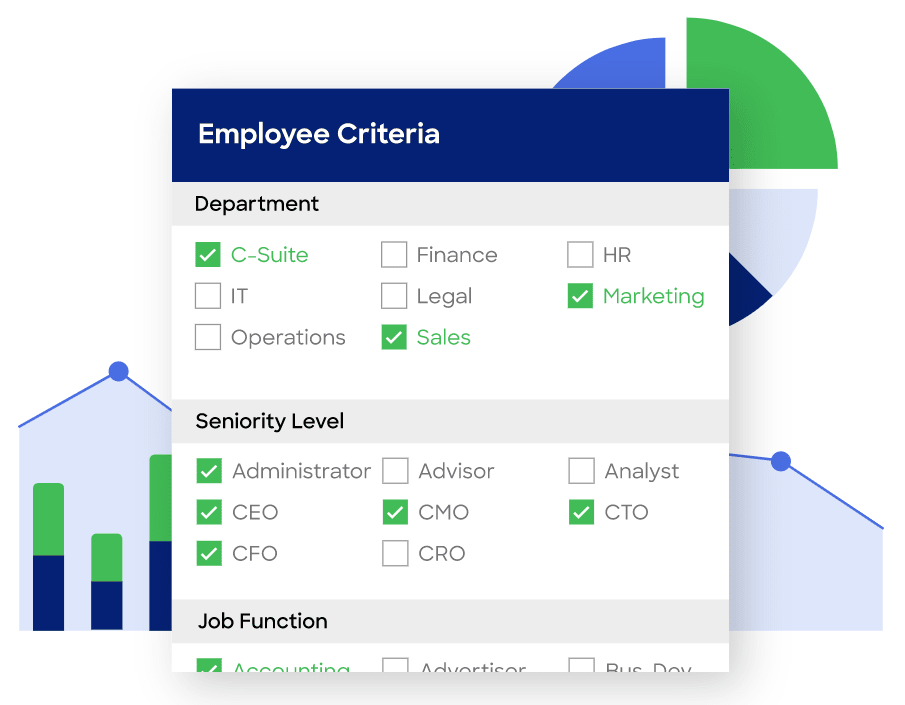
To achieve this, you need the right prospecting tools to not only identify companies that meet your MQL requirements but also the individuals you need to reach at those companies.
Take a look at our 10 Account-Based Marketing Tools to Improve Your ABM Performance article for a look at the best ABM tools that will help you identify and reach your ideal customers.
Lead qualification & scoring
If your aim is to increase MQLs, you’re going to need a robust system for qualifying and scoring leads. We look at this subject in detail in our Complete Guide to Lead Qualification & Scoring but, for now, let’s quickly specify what we mean by lead qualification and lead scoring.
- Lead qualification is a method of measuring and/or predicting the quality and value of leads, based on the data you have about them and the way they interact with your brand.
- Lead scoring allows you to assign a value to each lead, based on various criteria. These scores can change as leads progress along the buying process, making it easier for your marketing and sales teams to prioritise leads at each stage of the sales funnel
Lead qualification is the system that separates MQLs from leads that aren’t worth pursuing or prioritising. Leads that are approved as MQLs are placed on your marketing lists for lead nurturing campaigns while those that fail to make the cut are generally placed on a non-priority list until they demonstrate anything of value.
Lead qualification is basically a yes/no system where leads either meet your MQL requirements or they don’t.
Lead scoring, on the other hand, allows you to place a numerical score on leads, cases and customers to reflect their value or potential value to your business. With lead scoring, you can prioritise your marketing and sales efforts to focus on the prospects with the greatest potential and adjust your bids to invest more in the leads that are expected to generate the highest returns.
Here’s a handy video explanation from HubSpot:
There are two basic key types of lead scoring you need to know about: implicit leads scoring and explicit lead scoring.
- Implicit lead scoring: Generally involves scoring leads based on user behaviours – the pages they visit on your site, actions they take and interests they show.
- Explicit lead scoring: Matches prospects to your buyer profiles by comparing demographic data and other information you collect from users, normally through online forms.
Implicit lead scoring uses accessible data from user sessions without people actively handing over information. You’ll get this from your analytics tools, cookies, tracking URLs, events tracking and other tools.
Explicit lead scoring, on the other hand, uses data you collect from users, which requires them to engage with your brand more deeply. Explicit lead scoring is also generally more reliable than implicit – for example, getting users to confirm their location rather than using their IP address.
For a comprehensive breakdown of the different types of lead qualification and lead scoring techniques, go back to our Complete Guide to Lead Qualification & Scoring.
- Implicit lead scoring is based on the user data accessible to you without prospects having to actively provide information.
- Explicit lead scoring is where you capture data from users via web forms or user accounts.
- Demographic lead scoring values prospects based on characteristics – their age, where they live, what they do for a living and anything else you identify as being important.
- Organisational lead scoring targets companies and key individuals working at companies identified as ideal target clients.
- Stakeholder-level lead qualification specifically targets stakeholding decision-makers at your target companies.
- Behavioural lead scoring assesses the online behaviour of your prospects and uses session data to determine their value.
- Product & account lead scoring ranks prospects based on the value of the product they show interest in or the predicted account value of having them as a customer.
SaaS brands can use a mix of these lead qualification and scoring techniques but software companies are naturally set up for success with explicit lead scoring – so start by making the most of this.
You can build a more intricate lead qualification and scoring system over time, bringing in other techniques such as organisational lead scoring (for account-based marketing), behavioural lead scoring and product/account lead scoring.
Now, let’s take a look at some of the specific strategies you can use to build your SaaS MQL generation strategy.
Maximising MQL generation for SaaS companies
SaaS businesses have the benefit of collecting a depth of user data that most companies could never dream of capturing legitimately. So this is a key theme throughout the most effective strategies for increasing MQLs for software companies.
Strategy #1: The freemium model
The freemium model isn’t only effective for maximising user numbers, it also opens the door for an effective lead qualification channel by allowing users to create a personal account at the earliest stages of the buying process.

The sooner new users create an account, the sooner you can start attributing data to them individually and comparing them against your MQL requirements. You can also score leads on a more granular level by assigning personal information and session data to draw an accurate picture of their needs/potential.
As explained earlier, the downside of the freemium model is that you’ll also generate a large number of users who’ll never upgrade to paid plans. The upside is, you should still end up with a larger volume of MQLs and paying customers overall but you have to invest in lead nurturing and automation technology to manage non-paying leads, qualify MQLs and nurture them into paying customers.
This is the same strategy used by many of the biggest SaaS success stories of recent times, ranging from Slack and Trello to Spotify and Dropbox.
Strategy #2: Make the most of user account data
One of the biggest advantages you have as a SaaS company is being able to use account data to qualify leads and this isn’t restricted to the freemium strategy, either.
Whether you provide free plans, free trials or demos for potential customers, you have the opportunity to capture the information you need to qualify leads as soon as they create their account.
How you limit access or features is up to you but make sure you’re taking advantage of user accounts to capture the personal data you need to qualify MQLs and prioritise your marketing strategies.
Strategy #3: Collect session data to qualify & score leads
Another key factor to consider in your lead generation strategy is the opportunity to collect session data to qualify and score leads. Even if you run a relatively modest free trial period (7 days or less), you have a valuable window to capture user session data and feedback to gain insights into their needs and potential value.
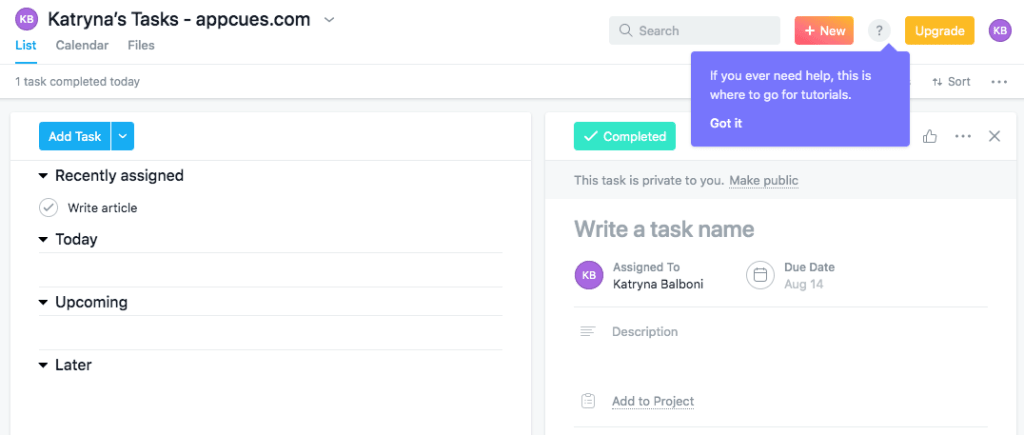
You can enhance this experience by providing in-app guides, tutorials or walkthroughs and personalising the feedback they receive based on the features they engage with.
Generally speaking, the longer your free trials run for the more reliable your session data becomes, as you can track user engagement over a longer period. If you’re running on a freemium model or offering a free forever plan, you can track engagement over whatever timeframe you choose.
It’s also worth keeping in mind that time-limited free trials may increase incentive to use your platform, which can be great for collecting more data in a short space of time but can exaggerate engagement metrics.
Strategy #4: Offer free tools outside of your main product
We’ve discussed this strategy in previous articles looking at B2B lead generation strategies and it’s used by some of the best SaaS companies in the business.
HubSpot takes this strategy to the extreme with its free CRM – one of the best customer relationship management (CRM) platforms around that’s 100% free, forever.
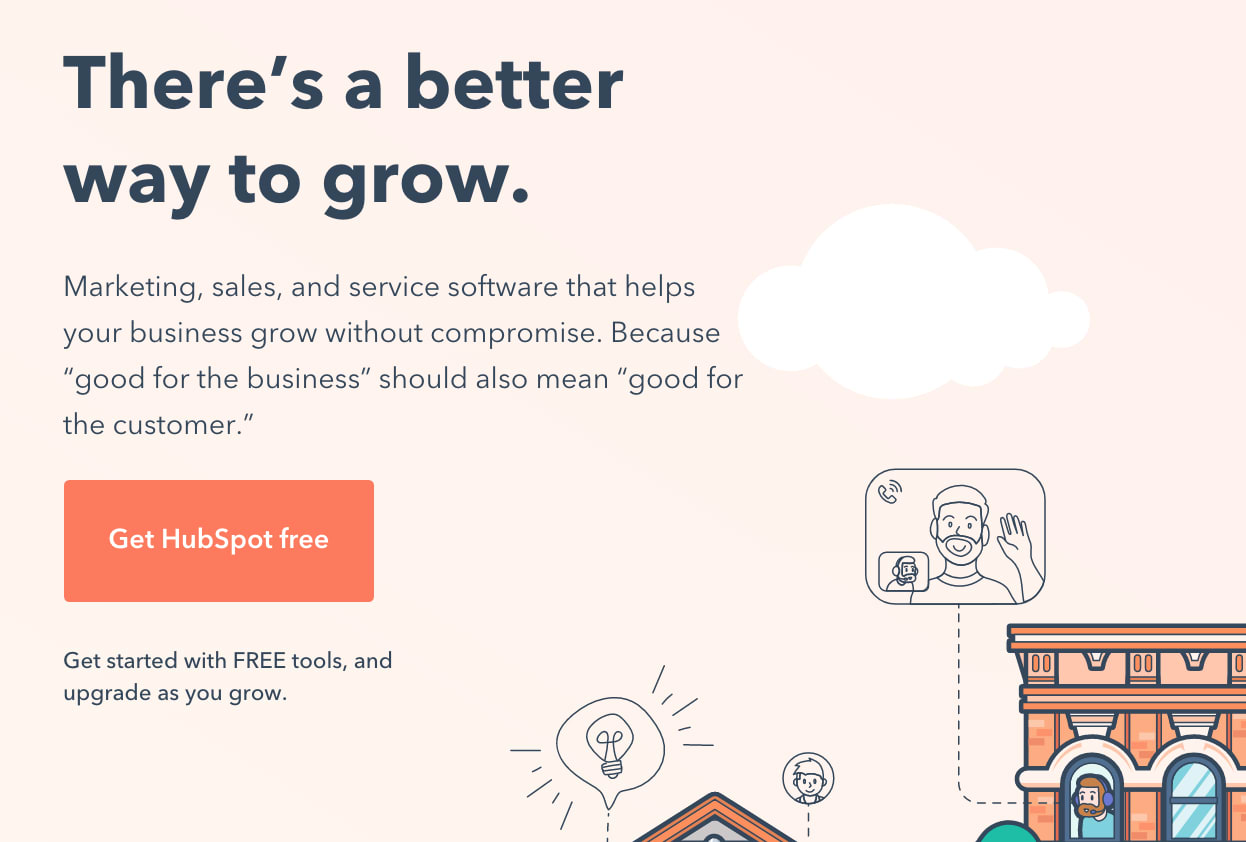
The genius of this MQL generation strategy is that the CRM offers one of the best products in its category but users need to integrate other tools to truly get the business benefits, which leads them to HubSpot’s paid products (limited free versions are also available).
By allowing any business owner to sign up for its free CRM, HubSpot captures user data very early on in the consideration process, allowing it to qualify and score leads based on their user data and session data, as we explain above.#
This isn’t the only free tool HubSpot offers, either.
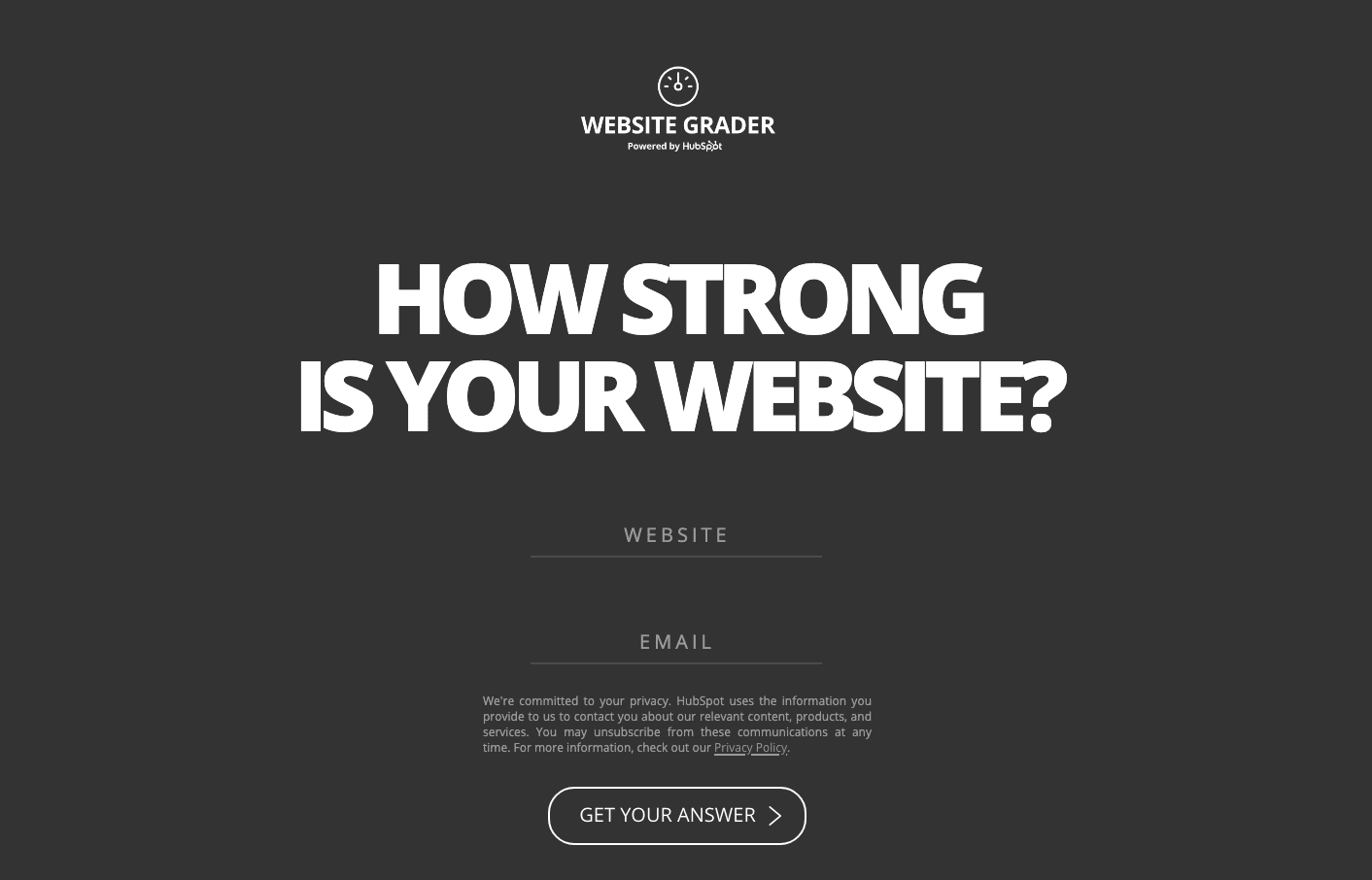
The company also provides a range of free tools outside of its account-based products that anyone can use, such as its Website Grader tool. Users simply type in their website URL and email address to receive a free report on the performance of their site.
In exchange, HubSpot captures email addresses to send follow-up campaigns to capture more data and tempt users with other product offerings. It also assigns website URLs to the emails addresses captures, which can be added to the new contact’s profile where further data can be added over time.
Strategy #5: Capture the data you need through onboarding
Onboarding is an opportunity to capture the data you need to quickly qualify leads, especially if you’re offering free plans or trials. You have to find the right balance between making onboarding as easy as possible (to maximise completions) and prompting users to submit the data you need from them.
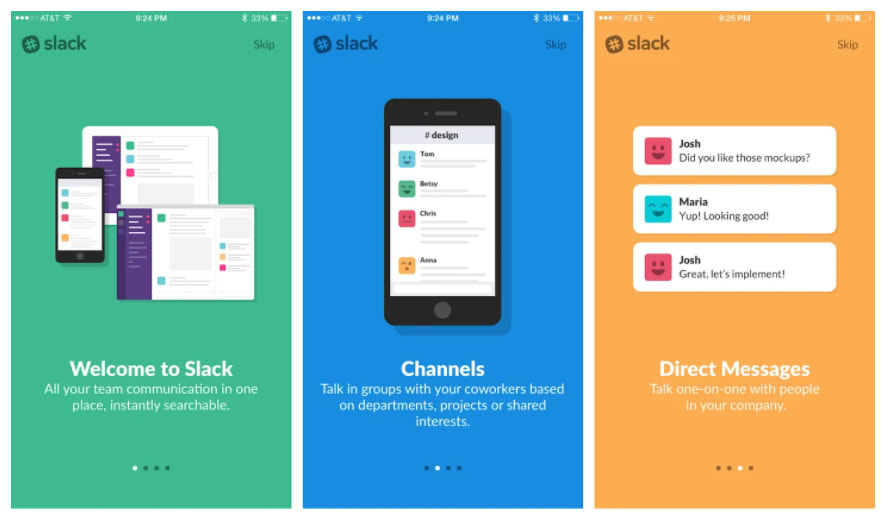
You might want to take the Slack route and make onboarding as easy as possible for new users but the downside is you might not capture the data you want by minimising friction as much as you could.
As you’ll see from this Hotjar case study looking at how DashThis optimised its onboarding process, you don’t need to remove every friction point to hit the right balance, though.
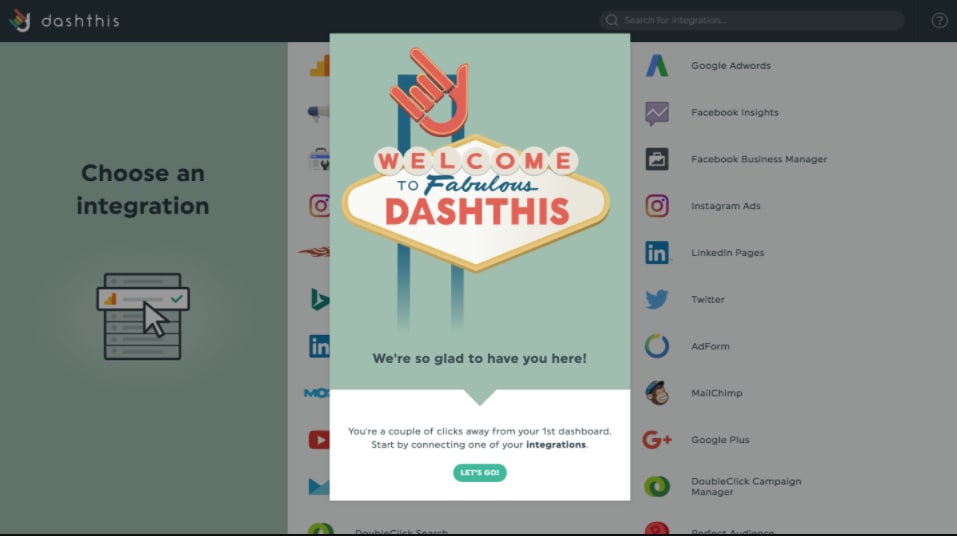
Much like the introductory walkthroughs we mentioned earlier, adding friction can actually benefit the user – another concept we’ve looked at in detail before in our 9 Ways to Increase Leads By Adding ‘Good’ Friction to Your Website article.
So don’t be afraid to experiment with data capture in your onboarding processes, especially if capturing MQLs is more important than simply maximising your total number of leads.
Strategy #6: Automate lead qualification & scoring
Whichever MQL strategies you adopt, the key to scaling growth is to automate lead qualification to prevent any bottlenecks as your collection of leads grows.
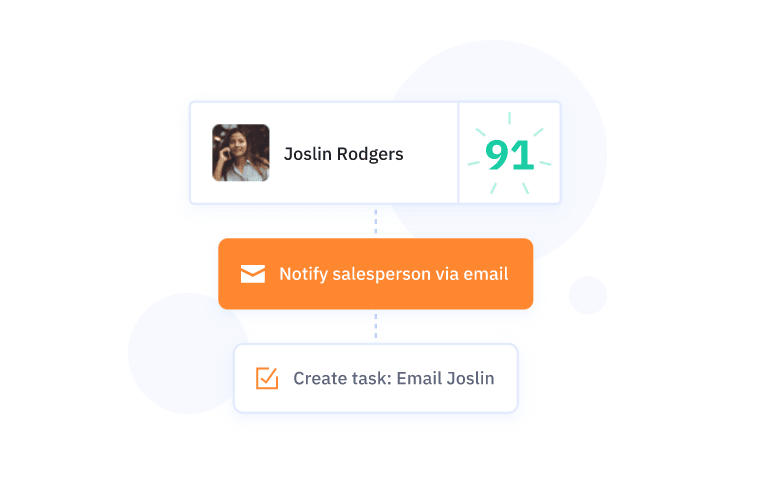
Thankfully, with tools like ActiveCampaign, it’s never been easier to automate lead qualification and scoring across the entire customer journey. Regardless of how many leads you capture, ActiveCampaign allows you to create automated qualification processes so that every lead is qualified without any manual input from your marketing and sales teams.
You can also automatically update lead scores, based on how they respond to your emails, the actions they take on your website and their behaviour within your software product.
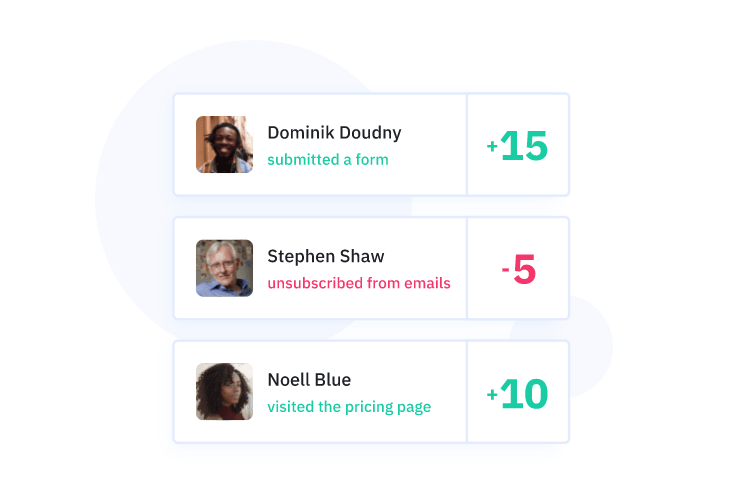
This allows you to automate campaign responses to trigger as scores change – for example, when a high-value prospect visits your pricing page after clicking the upgrade button in your app or a new lead unsubscribes to your email list.
Strategy #7: Use prospecting tools to find new MQLs
This will be the core of your account-based marketing strategy if you’re a B2B SaaS provider and, once again, you can find the best prospecting tools in our 10 Account-Based Marketing Tools to Improve Your ABM Performance article.
However, prospecting tools and account-based marketing can be useful for identifying new B2C MQLs, too.
While B2B SaaS companies will want to trigger key business decision-makers at their target companies, B2C providers can target individuals working at companies likely to have an interest in their software.
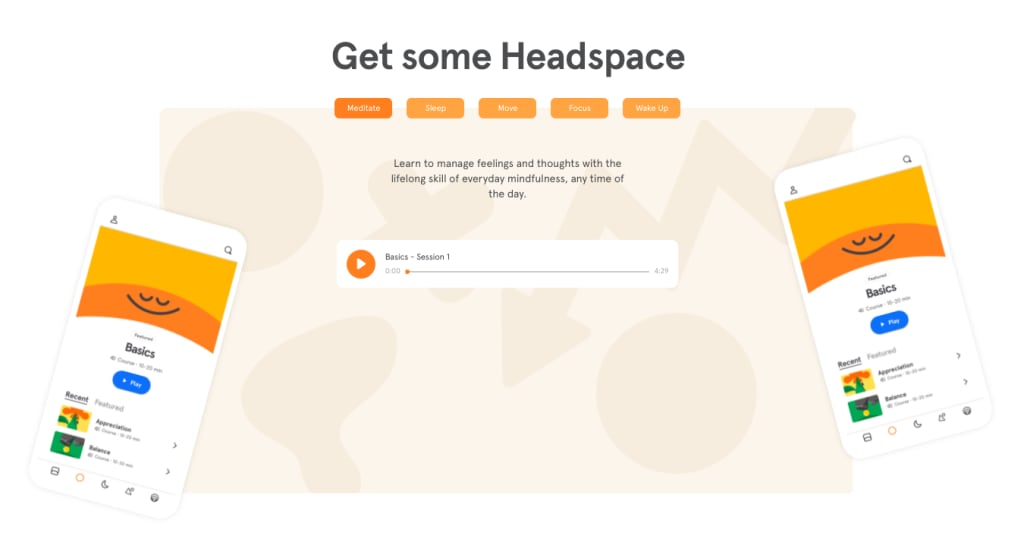
For example, a company like Headspace can use any prospecting tool to target stressed employees and promote its app as the perfect tool for reducing stress and anxiety. The company can also personalise their messages to reflect the nature of prospects’ industry, the size of their company or even their job title.
Likewise, you can use the technographics feature in a prospecting tool like Leadiro to find out which hardware, software and technology solutions companies are using to reveal the business challenges they face.
Naturally, B2B SaaS companies can use this to find companies using similar products to their own and position themselves as the better option but a more B2C-driven provider can also use these insights.
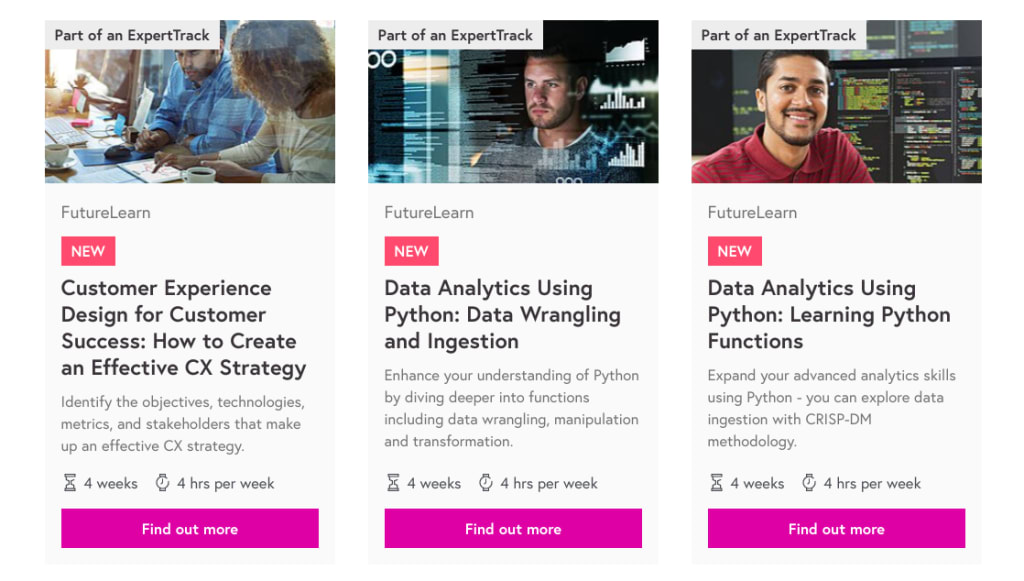
For example, a course provider like Future Learn can target staff with courses promising them to take the next leap in their career or training for the specific tools that will help them get a promotion within their existing company – or a job with one of their rivals.
The point is, account-based marketing is invaluable for B2B SaaS providers but it can also be a powerful strategy for software companies targeting users outside of the B2B niche – you just have to be a bit more creative with your prospecting tactics.
Make the most of SaaS data to maximise MQLs
While SaaS marketing is a unique challenge it does have its advantages and the wealth of lead/user data you’re able to collect provides everything you need to qualify MQLs with accuracy – to a level most businesses could only dream of.
So make the most of this data and follow the steps we’ve outlined in this article to maximise MQLs and prioritise your marketing strategies to convert the highest-value prospects into paying customers.




